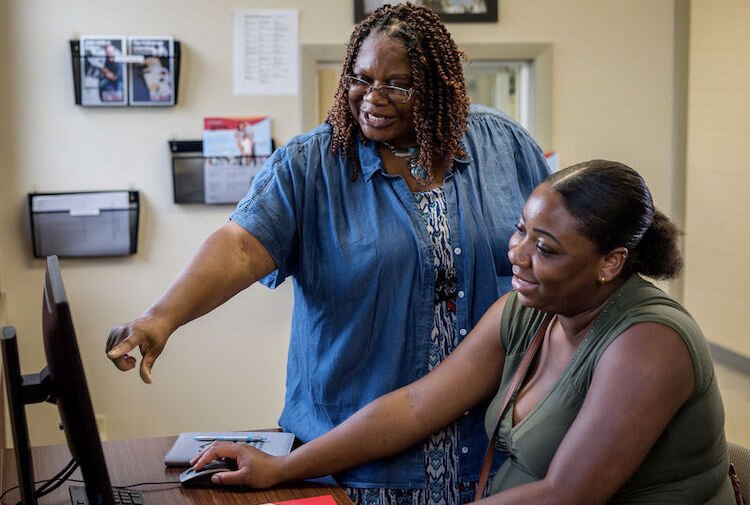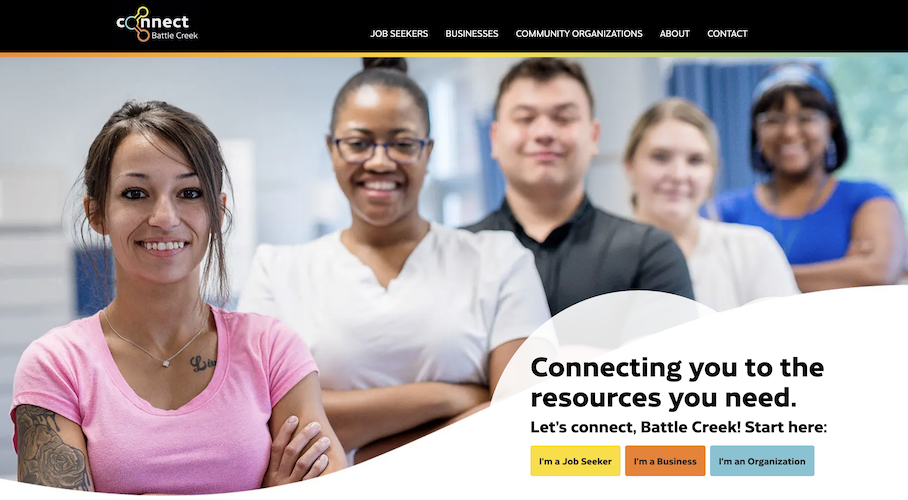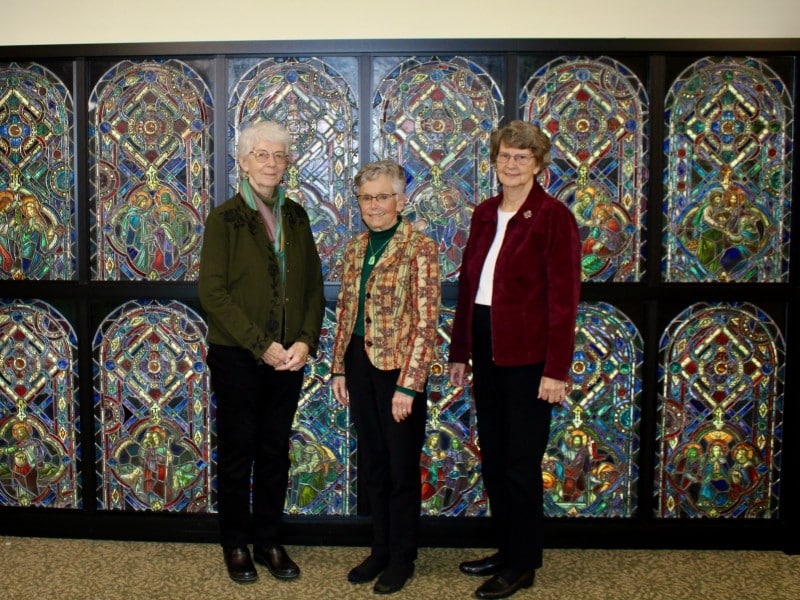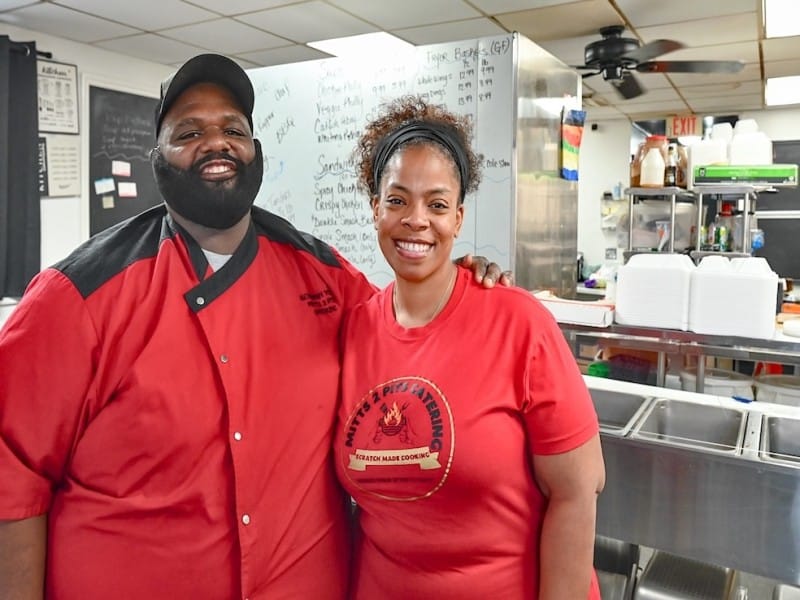Connecting virtually, supported locally: Website delivers workforce resources in B.C.
Connect Battle Creek is a centralized workforce hub for Battle Creek where job seekers can find the resources they need to get or keep a good job. Employers can find ways to address workforce challenges so that their workers can have a positive work experience. And community organizations can list their services so that people who need them can find them.
Editor’s note: This story is part of Southwest Michigan Second Wave’s On the Ground Battle Creek series.
For many individuals and families in Battle Creek living at or below the federal poverty level finding a job and accessing resources to ensure that they can keep that job is a challenge, says Teresa Momenee-Young, Executive Director of the Woman’s Co-op.
It takes work to find work, she says, but for those who need to secure basic supports that will enable them to keep a job, that work increases dramatically, too often resulting in hopelessness and frustration.
“Unfortunately, if you’re homeless and don’t have access to quality, affordable childcare or reliable transportation and you’re relying on other people and the bus and sleeping on other people’s couches, you’re already beaten down,” Momenee-Young says.
As a way to eliminate these kinds of barriers, the Woman’s Co-op and three other organizations in the community founded Connect Battle Creek, described on its website as a “centralized workforce hub for the Battle Creek community. Job seekers can find the resources they need to get or keep a good job. Employers can find ways to address workforce challenges so that their workers can have a positive work experience. Community organizations can list their services so that people who need them can find them.”

The website, which launched in June, is the product of ongoing discussions among members of a consortium that is made up of the organizations that founded Connect Battle Creek. In addition to the Woman’s Co-op, original consortium members include Michigan Works Southwest; Goodwill Industries of Central Michigan’s Heartland; and Kellogg Community College.
Community Action Agency; and the Village Network of Battle Creek are among the most recent organizations to partner with the consortium and Connect Battle Creek, Momenee-Young says, adding that the list of businesses and organizations on the website offering resources continues to grow.
“The consortium and the work of the consortium is very important. This website connects you to all these opportunities and also daycare and transportation resources. For me, what it does is that instead of a participant in our organization running around to 15 different agencies, they can go to one website and find what they’re looking for,” Momenee-Young says. “It makes it easier for the participant versus you come to me and I have to give you referrals to four other places. We think it’s better for our participants.”

The website was designed based on feedback consortium members gathered from community stakeholders and their own program participants, says Cherise Buchanan, Project Manager for the Michigan Works Neighborhood Employment Hubs in Battle Creek.
“We made a concerted effort to go to local organizations and make them aware of the website,” she says.
Although the website is designed for community residents who are seeking work, there is a particular focus on members of the city’s BIPOC (Black Indigenous People of Color), the working poor, and those who are part of the ALICE population (Asset Limited Income Constrained Employed), Buchanan says.
The consortium recently hired an individual to work with the city’s low-income and BIPOC populations, says Jakki Bungart- Bibb, Director of Michigan Works Battle Creek Service Center.
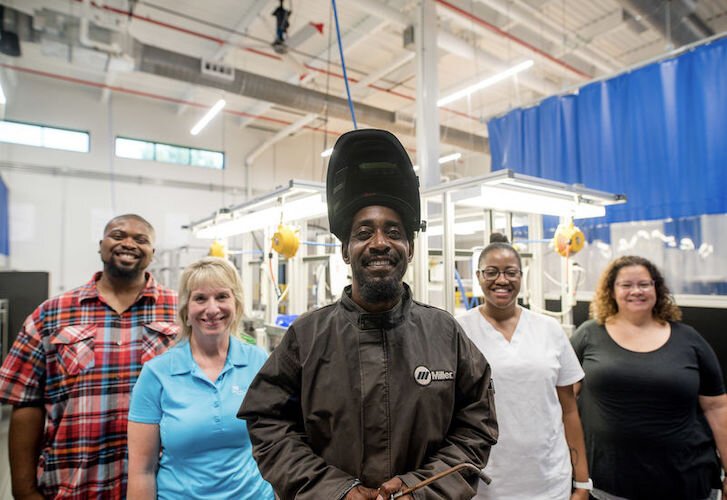
“We want to make sure we’re getting to the groups that are a focus for us,” she says. “One of our goals is to strengthen our relationship with the Hispanic population.”
To make the website as user-friendly as possible to the city’s BIPOC communities, Buchanan says there are ongoing discussions about translating the website from English into other languages spoken by community members. She says there also are conversations about what will work best for the communities that will be served by this website.
“We are trying to make it fit our community as best as we can,” Buchanan says. “One of the things we know is that transportation is a huge barrier for so many people. If they need supports that address needs like transportation, they might not know where to go. Instead of physically going to all four corners of the city, they can get on a phone, tablet, or a computer and go to the Connect Battle Creek website and get a customized report with available resources for them in the community. The hope is that this alleviates barriers for them.”
These barriers often take the form of difficult choices, she says. “If the brakes go out in my car, do I pay the rent or get my brakes fixed?” Buchanan cites as an example.
Building a foundation designed to shift
The focus of consortium members and the organizations and businesses that partner with them on Connect Battle Creek will change to accommodate constantly-evolving needs in the community, says Alana White, Program Officer with the W.K. Kellogg Foundation’s Battle Creek team.
She says WKKF came alongside the consortium and is a partner in the Connect Battle Creek initiative, in addition to funding it.
“This isn’t something that WKKF pursued. It bubbled up in the community and we wanted to come alongside,” White says. “We’re funding work in support of the removal of barriers.”

The WKKF began funding this work in 2017 when it awarded a three-year grant for nearly $2.866 million to the W.E. Upjohn Institute / Michigan Works! Southwest to increase access to employment and decrease barriers for the unemployed by developing employment hubs in Battle Creek neighborhoods with high unemployment. That same year, the WKKF awarded a $2.85 million grant to KCC to support its workforce training programs, White says.
Bungart-Bibb says Michigan Works had been providing services including jobs fairs in the community and WKKF approached her organization about providing these services fulltime in those neighborhoods with high rates of unemployment.
That initial grant enabled Michigan Works to create employment hubs at Parkway Manor and New level Sports Ministries, both in the Washington Heights neighborhood; CAA and the Calhoun County Jail. Bungart-Bibb says they no longer operate the Parkway Manor hub because it was not being well-used and the hub at the jail is temporarily closed because of a moratorium on visitors due to COVID. However, a hub was opened at KCC’s Regional Manufacturing and Technology Center.
In 2020, the Upjohn Institute / Michigan Works! Southwest was awarded $5.090 million from the WKKF for a grant period of Oct. 1, 2020 through Sept. 30, 2024. This grant was awarded to continue increasing access to employment and decreasing barriers for the unemployed and underemployed. A portion of those funds is being used to cover the cost of Connect Battle Creek, Bungart-Bibb says.
“The foundation was making grants to a lot of different workforce development activities and what they wanted to address was not only moving the needle, but establishing a workforce ecosystem and getting all of the organizations doing this work working together,” Bungart-Bibb says. “We had shared customers and the same goals and wanted to make it streamlined for clients having a hard time finding work. We always had them working together, but we had not created a formalized consortium.”
White says almost four years ago quarterly meetings focused on jobs began. These meetings involved small business owners, employers, economic development specialists workforce stakeholders, and members of her team.
The pandemic and its economic impact heightened challenges for employers who were trying to find local talent and job seekers who were trying to find those jobs, she says.
“During COVID when the pandemic first started and there were job losses, I watched our workforce partners in real-time work together to get people as much help as possible to get work,” White says.
“We didn’t have a way to help both employers and jobs seekers trying to get access to resources in this particular area. Michigan Works asked if they could use their grant not just for marketing their workforce development services, but also to create a repository for people around jobs. The foundation is focused on children and ensuring that vulnerable children are successful so we also focus on healthy families and working on equitable communities. This aligned with our priorities and it felt like it was a win-win to get started.”
White says a great deal of time was spent discussing the WKKF’s focus on racial equity and how all members of the community are supported when it comes to employment and economic stability. She says the website is designed to meet the different needs of families through a growing list of community partners who are diverse and reflect different populations within the community.
But she says it’s important for people to recognize that Connect Battle Creek is only one of many tools to streamline processes for those seeking resources and assistance.
“I think we have a lot of systems that are inequitable and are broken and they impact some people more than others. The difficulty sometimes is understanding to what extent those systems impact all segments of our community,” White says.
“People do the best they can with what they have. We have employers trying to fill talent needs and gaps and people looking to fill in that need or gap,” White continues. “I think sometimes as a community it’s important for us to pause and think about what else we could be doing and doing better. I think about how we support people and employers where they are and how we build bridges. Connect Battle Creek is one way to do that but, Battle Creek is not an island and there are many things that may come to bear on a person’s ability to get to work on time or keep a job.”

